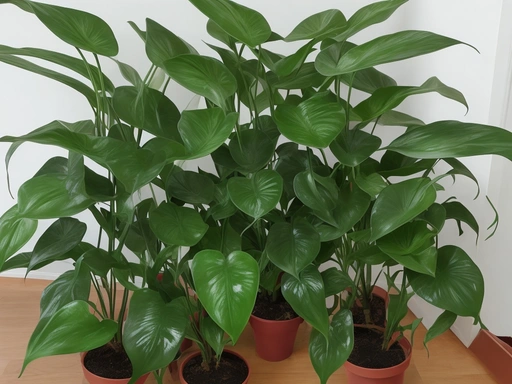Watering Anthurium Plants: The Ultimate Guide!
Key Takeaways:
- Water Anthurium plants thoroughly but avoid overwatering to prevent root rot.
- Allow the top layer of soil to dry slightly before watering Anthurium plants again.
- Use room-temperature water to keep Anthurium plants hydrated.
- Adjust watering frequency based on the temperature and humidity conditions in your environment.
Are you ready to level up your plant care game and become the ultimate green thumb?
Well, you’re in the right place because today we’re diving into the fascinating world of watering Anthurium plants.
Anthuriums are a true showstopper with their vibrant, heart-shaped blooms, but they also require some TLC when it comes to watering.
In this article, we’ll explore the dos and don’ts, the signs of overwatering and underwatering, handy tips for proper watering, and even the best watering methods and water quality to boost your Anthurium plant’s health and beauty.
So grab your watering can and let’s get started!
| Watering Frequency | Watering Method | |
| Indoor Anthuriums | Once a week | Water from the top, allowing excess water to drain |
| Outdoor Anthuriums | Twice a week | Water from the top, ensuring the soil is evenly moist |
| Watering Amount | Thoroughly moisten the soil | Avoid overwatering, as it can lead to root rot |
| Water Quality | Use filtered or distilled water | Avoid using chlorinated or fluoridated water |
| Signs of Underwatering | Wilting, yellowing leaves, dry soil | Increase watering frequency |
| Signs of Overwatering | Yellowing leaves, root rot, fungus gnats | Reduce watering frequency and improve drainage |
Understanding Anthurium Plants
Anthurium plants are tropical houseplants known for their vibrant, heart-shaped flowers and glossy, dark green leaves.
Understanding the basic care needs of Anthurium plants is essential for ensuring their health and longevity.
What are Anthurium Plants?
Anthurium plants, also known as flamingo flowers or laceleafs, are tropical houseplants that are prized for their vibrant, heart-shaped blooms and glossy foliage. These plants are native to the tropical regions of Central and South America and can add a touch of elegance and beauty to any indoor space.
Anthuriums come in a variety of colors, including red, pink, white, and even green, making them a popular choice for plant enthusiasts.
With proper care, Anthurium plants can thrive and bring a pop of color to your home.
Anthurium Plant Care Basics
Anthurium Plant Care Basics:
- Provide bright, indirect light for your Anthurium plant.
- Keep the temperature between 60-85°F (15-29°C.
- Use well-draining soil to prevent waterlogging.
- Water the plant when the top inch of soil feels dry.
- Fertilize every 2-4 months using a balanced liquid fertilizer.
- Maintain humidity levels of 60-80%.
- Prune and remove any yellow or dying leaves.
Why is Watering Important for Anthurium Plants?
Watering is crucial for Anthurium plants because it helps maintain their health and overall well-being. It provides them with the necessary hydration, allowing them to carry out vital functions like photosynthesis and nutrient absorption.
Proper watering also prevents dehydration, wilting, and leaf discoloration in Anthurium plants, ensuring their longevity and beauty.
Watering Anthurium Plants: Dos and Don’ts
When it comes to watering Anthurium plants, there are a few important dos and don’ts to keep in mind.
How Often Should Anthurium Plants Be Watered?
Anthurium plants should be watered when the top inch of their soil feels slightly dry to the touch.
Generally, this means watering them once every 1-2 weeks.
Be careful not to overwater, as Anthuriums are susceptible to root rot.
Monitor the moisture level of the soil and adjust your watering schedule accordingly.
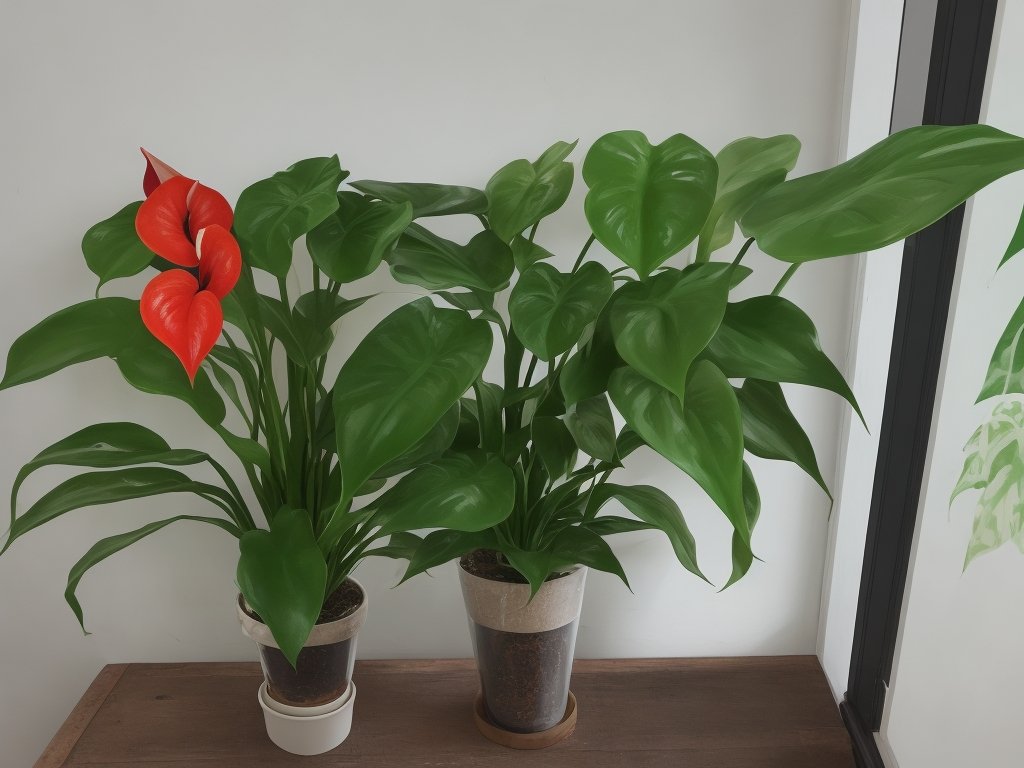
How Much Water Should Anthurium Plants Receive?
Anthurium plants should receive water when the top inch of their soil feels dry to the touch.
Water thoroughly until water drains out of the bottom.
Avoid letting the plant sit in standing water, as it can lead to root rot.
Aim for a balance between watering and allowing the soil to dry out slightly between watering sessions.
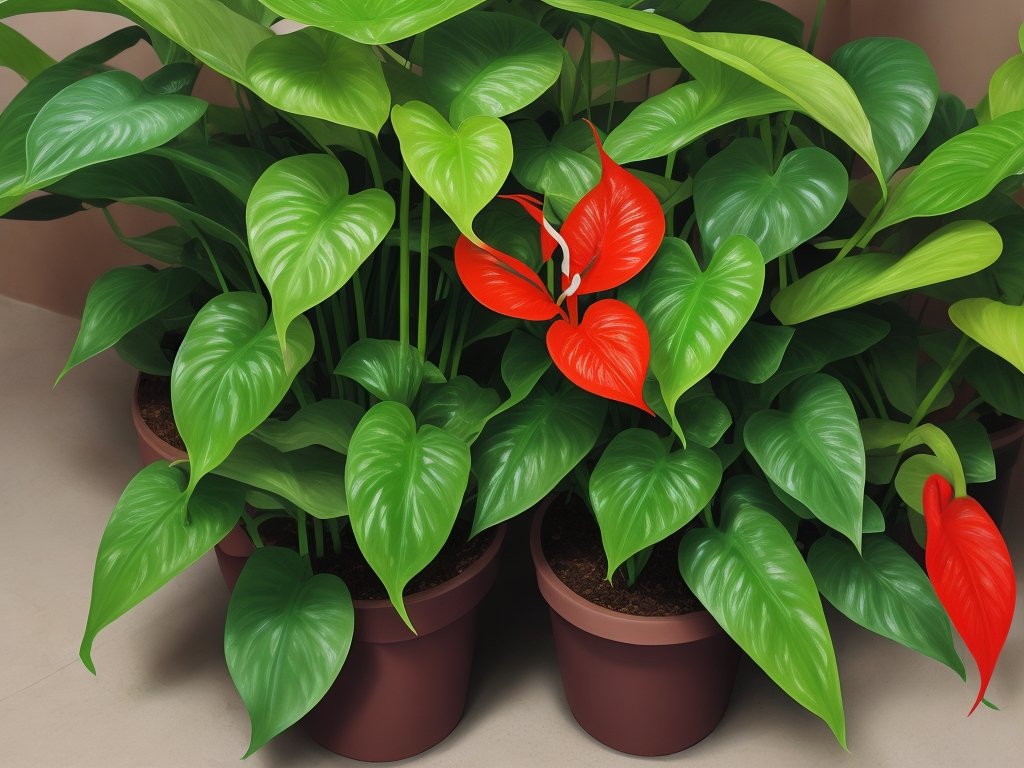
Signs of Overwatering Anthurium Plants
Overwatering Anthurium plants can lead to several visible signs.
The leaves may turn yellow, become soft, or develop brown spots.
The roots may become mushy and start to rot.
Additionally, the plant may have stunted growth, wilted appearance, or develop mold on the soil surface.
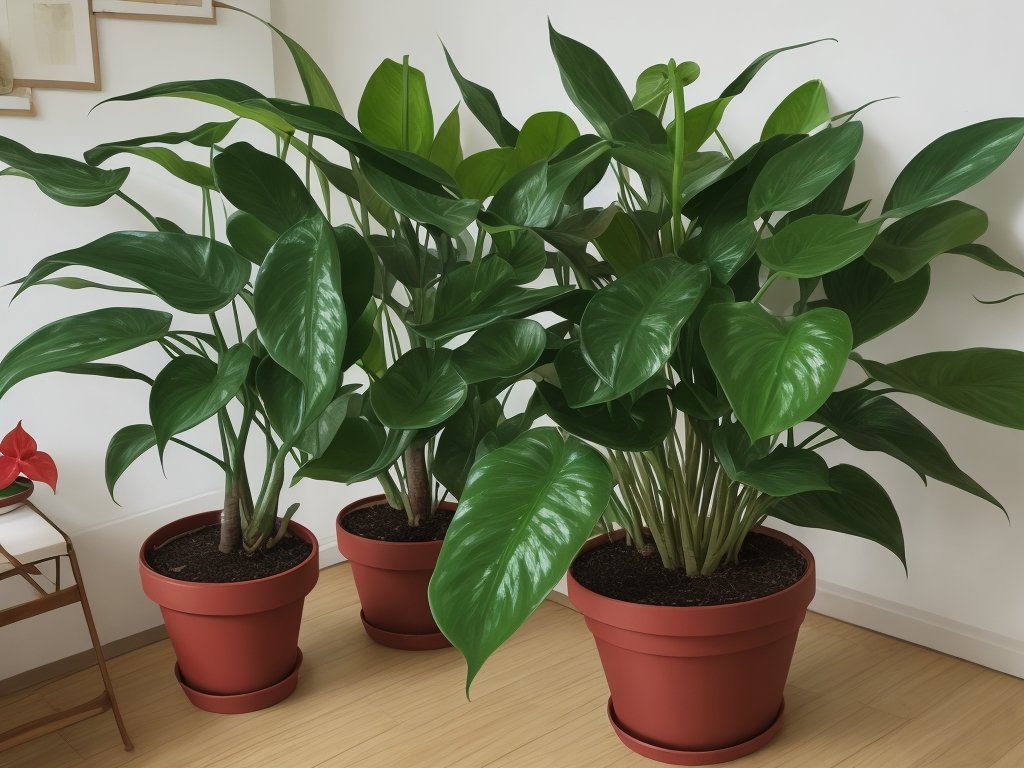
Signs of Underwatering Anthurium Plants
Signs of underwatering in Anthurium plants include wilting leaves, dry and crispy foliage, yellowing or browning of leaves, slow growth, and dry potting soil. The leaves may also appear droopy or limp, and the plant may require more frequent watering than usual.
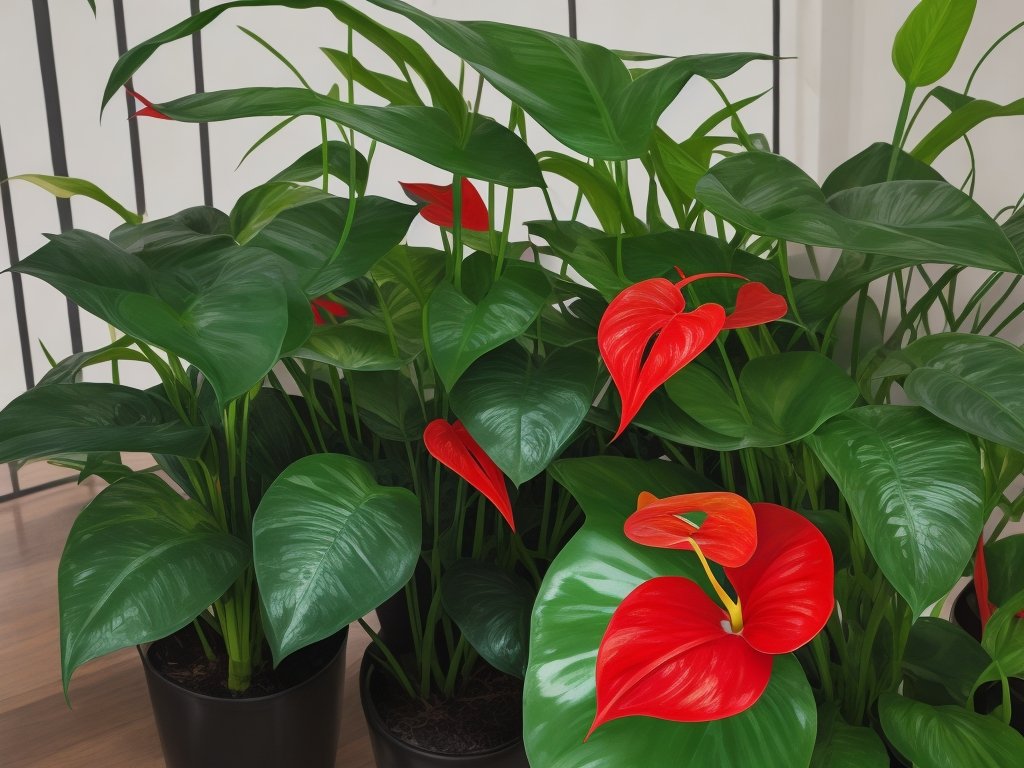
Tips for Proper Watering of Anthurium Plants
To properly water your Anthurium plants, make sure to follow these tips:
- Check the soil moisture by inserting your finger about an inch into the soil. If it feels dry, it’s time to water.
- Water thoroughly, allowing the excess water to drain out of the pot’s drainage holes.
- Avoid leaving your Anthurium sitting in standing water, as it can lead to root rot.
- Maintain a consistent watering schedule, but adjust it based on the plant’s needs and environmental factors. Anthuriums like to slightly dry out between watering.
- Consider the humidity levels in your home. Mist-spraying the leaves or using a pebble tray can help increase humidity for your plant.
- Use room temperature or lukewarm water to prevent shocking the roots.
- Take note of any signs of overwatering, such as yellowing leaves, wilting, or a musty odor. Adjust your watering routine accordingly.
With these tips, you’ll be able to keep your Anthurium plants happy and thriving!
Watering Methods for Anthurium Plants
Watering Anthurium plants involves top watering, bottom watering, mist-spraying, and using self-watering systems.
Watering Anthurium Plants from the Top
To water Anthurium plants from the top, simply pour water onto the soil until it’s evenly moist.
Make sure not to overwater, as these plants prefer slightly dry conditions.
Allow the top inch of soil to dry out before watering again.
Avoid getting water on the leaves, as this can cause damage or disease.
Watering Anthurium Plants from the Bottom
To water Anthurium plants from the bottom, place the plant pot in a tray of water for around 15-20 minutes.
This allows the plant to absorb water through the drainage holes, ensuring that the roots receive the necessary hydration.
Afterwards, remove the plant from the tray to avoid waterlogging.
Mist-spraying Anthurium Plants
Mist-spraying Anthurium plants involves lightly spraying water on their leaves. It helps to create a humid environment, which the plants love.
But be careful not to overdo it, as excessive moisture can lead to leaf rot and other issues.
Mist-spraying once or twice a week is usually sufficient.
Using Self-watering Systems for Anthurium Plants
Using self-watering systems for Anthurium plants can be a convenient and effective way to provide them with the right amount of moisture. These systems typically consist of a reservoir that holds water and a wicking mechanism that delivers water to the plant’s roots as needed.
Here are a few advantages of using self-watering systems:
- Self-watering systems help maintain consistent moisture levels, preventing the plant from being overwatered or underwatered.
- They reduce the risk of root rot, which is a common issue in Anthurium plants.
- These systems can save you time and effort, as they require less frequent watering compared to traditional methods.
- They can be particularly useful if you have a busy schedule or tend to forget to water your plants.
- Self-watering systems can also minimize water waste, as they supply water directly to the roots without excess runoff.
Water Quality and Temperature for Anthurium Plants
To ensure healthy growth, it is important to consider the water quality and temperature for your Anthurium plants.
The Importance of Using Proper Water Quality
Proper water quality is crucial for Anthurium plants because it affects their overall health and growth.
Water that is too hard or contains high levels of chlorine, fluoride, or other chemicals can damage the plant’s roots and inhibit nutrient absorption.
Using filtered or distilled water is recommended to ensure the ideal pH balance and mineral content for healthy Anthurium growth.
Ideal Water Temperature for Anthurium Plants
The ideal water temperature for Anthurium plants should be around 65 to 75 degrees Fahrenheit (18 to 24 degrees Celsius).
It’s important to avoid using water that is too cold or too hot as it can shock the plant and affect its health.
Make sure to use water that is at room temperature for the best results.
Frequently Asked Questions about Watering Anthurium Plants
How Do I Know if My Anthurium Plant Needs Water?
To know if your Anthurium plant needs water, you can check the soil moisture level.
Stick your finger about an inch into the soil and see if it feels dry.
Additionally, if the leaves are drooping or the plant feels lighter than usual, it may be a sign that it needs water.
Pay attention to the plant’s overall appearance and adjust watering accordingly.
Can I Use Tap Water to Water Anthurium Plants?
Yes, you can use tap water to water Anthurium plants.
However, it’s important to note that tap water may contain chemicals, such as chlorine and fluoride, which can be harmful to the plants.
To minimize any potential damage, allow the tap water to sit for 24 hours before using it to water your Anthurium.
Alternatively, you can use filtered or distilled water for optimal care.
What Happens if I Overwater or Underwater My Anthurium Plant?
Overwatering an Anthurium plant can lead to root rot, yellowing leaves, and wilting. Underwatering can cause dehydration, drooping leaves, and slowed growth.
Finding the right balance is key for the health of your Anthurium plant.
Can I Use Ice Cubes to Water Anthurium Plants?
No, it’s not recommended to use ice cubes to water Anthurium plants.
Ice cubes can shock the roots and potentially damage the plant.
It’s best to use room temperature water to ensure the health and well-being of your Anthurium plant.
Final Verdict
Understanding the importance of proper watering for Anthurium plants is essential for their overall health and vitality.
Remember to water them regularly, but avoid overwatering as it can lead to root rot.
Pay attention to the signs of overwatering and underwatering, and adjust your watering schedule accordingly.
Use high-quality water and maintain the ideal water temperature for optimal growth.
By following these guidelines, you can ensure that your Anthurium plants thrive and bring beauty to your space.
So go ahead and give your Anthurium plants the love and care they deserve, and watch them flourish!







